Day 5 would have us crossing another international border (this time in Canada, the third country of our 2005 Three Flags Classic rally), and it would be yet another grand day. If you haven’t read the first four days, you might want to catch up by reading our prior blog posts here:
The 2005 Three Flags Classic Rally: the Intro!
The Three Flags Classic: Day 1
The Three Flags Classic: Day 2
The Three Flags Classic: Day 3
The Three Flags Classic: Day 4
On to Day 5!
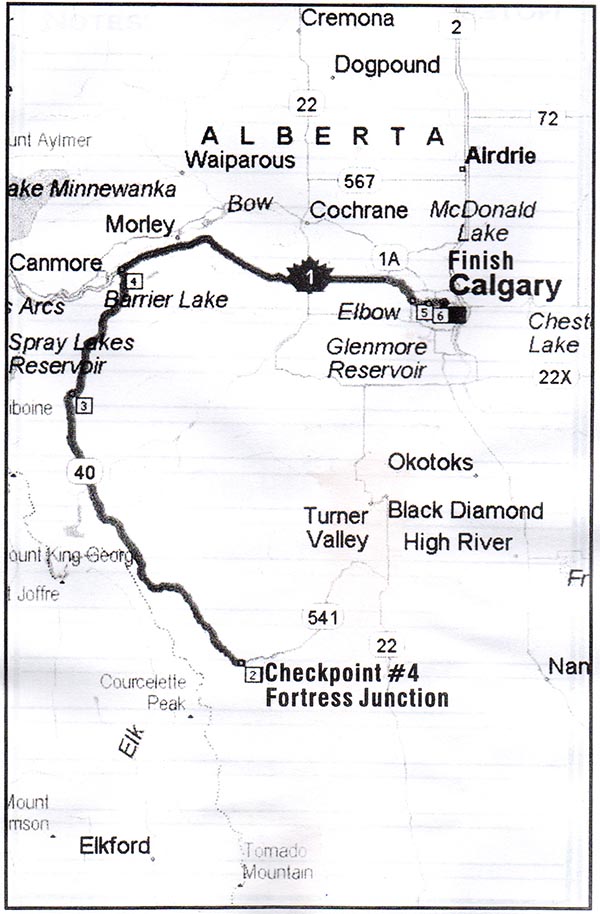
We loaded up early again the next morning and headed north from Whitefish, Montana. Wow, was it ever cold! It was 34 degrees when we rode across the border into Canada, and even though the sun climbed higher into the sky on that fine bright day, it grew even colder as we continued north. I had my electric vest cranked all the way up and I was still freezing.
We stopped for breakfast in Fernie after we crossed the border to warm up a bit. Our route took us through a brief bit of British Columbia, and then we entered Alberta. The route took us into the Kananaskis National Park in Canada on our way to Calgary, our destination that day.

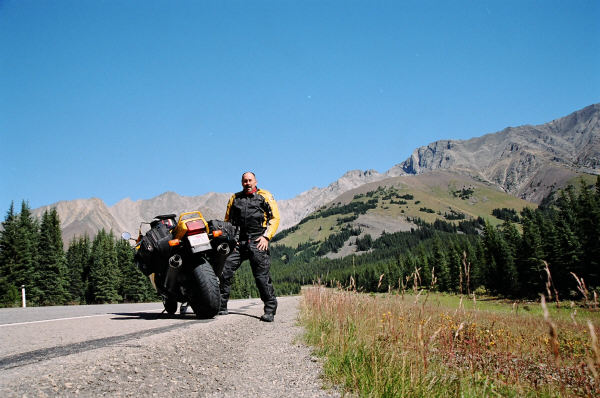
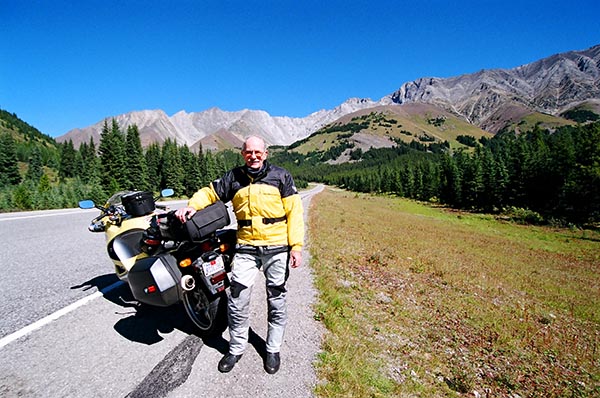
We saw signs warning of mountain sheep crossing the road. I thought it would be great to see one, but I didn’t expect that I would. Then we started spotting the things all over.
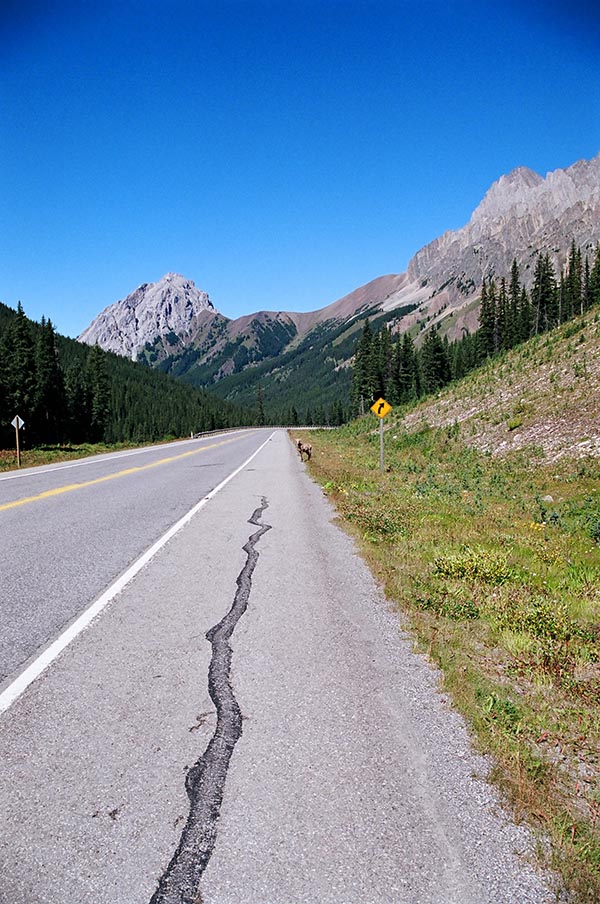
The first one was that lone sheep you see in the photo above. We stopped to grab a photo, but I realized I had my Sigma 17-35 wide angle on the camera. I grabbed a quick shot from the motorcycle, but I knew the distance and the wide angle lens would make the animal just a tiny bit in the photo. I didn’t want to get off the bike because I thought I might scare it away. I fumbled to get my longer range 24-120 zoom lens on the camera (it was in my tank bag). The entire time I thought the goat would run away before I could get the lens on my Nikon N70.
Then the sheep looked directly at me and starting slowly walking in my direction.
“Uh oh,” I thought.
I didn’t know if mountain sheep bite or if they are aggressive. Maybe it would come over and try to butt me. I could see, even at a distance, that the thing had horns. I had visions of it knocking me and the Triumph over. My Triumph had never been on its side. The scratches on that beautiful Daytona fairing would be tough to explain. I remember wondering if I would be able to keep the bike upright if the thing butted me.
Little did I know….
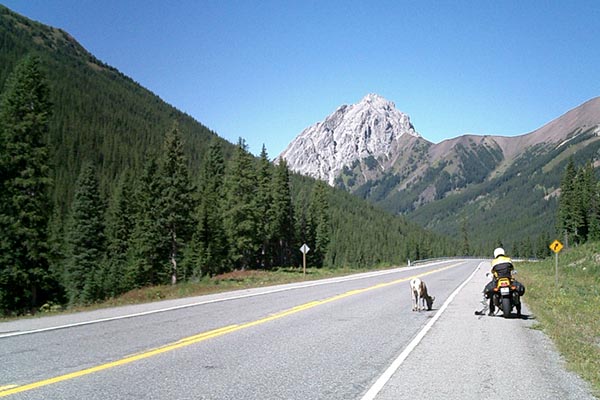
The sheep literally walked right up to me. I took this shot while sitting on my Triumph, at a distance of maybe 4 or 5 feet.
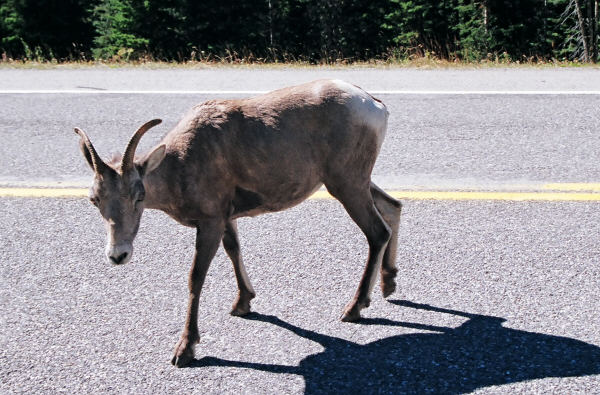
I shot up a whole roll of film and the thing was still hanging around. I noticed that as it advanced, it would stop every few feet and lick the road. I’m guessing that it was enjoying the remnants of the road salt the Canadians put down when it snows and the roads ice over. Someone later said they are probably used to being fed. I prefer to think it just wanted a better look at the Daytona. After all, it was the only Triumph in the 2005 Three Flags Classic.
It warmed up after that and it was a glorious day. Our next to last checkpoint was in the Kananaskis National Park at a place called Fortress Junction. Marty and I chatted with the other riders and then we rode the final leg of the Rally into Calgary.
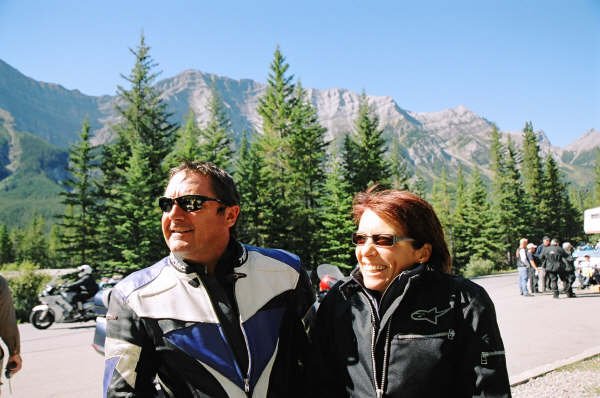
Later that day, we rode along a highway and then into Calgary, the endpoint for the 2005 Three Flags Classic. I would be the turnaround point for Marty and me. We still had a lot of fun in front of us…a couple of days in Calgary, and then the grand ride home. On the ride home, we were on our own (it was not part of the Three Flags Classic, which ended in Calgary. That portion of our ride is coming up in future blogs, so stay tuned!
Don’t miss any of our blogs, and automatically enter for a free moto adventure book giveaway by joining our email list! We’ll never give your email to anyone else, and you can unsubscribe whenever you want!

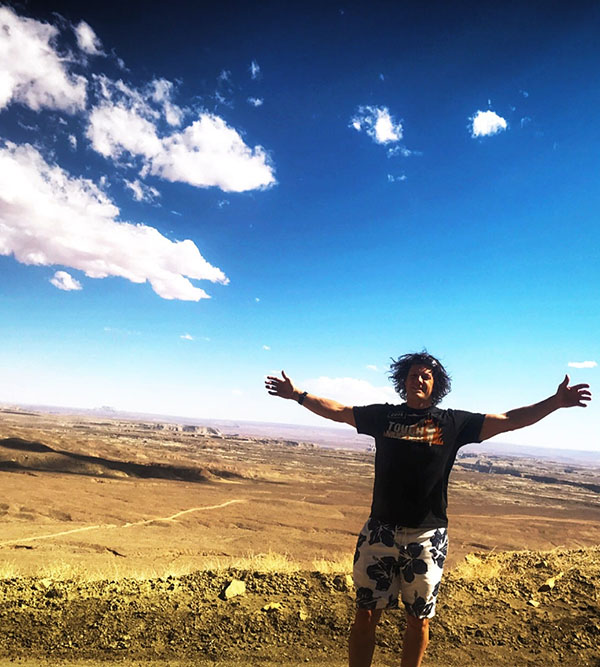

 As I developed my passion for moto camping I began following blogs and Facebook groups to seek out tips and tricks that can make my moto camping experiences more exciting and comfortable. I began to notice that some moto campers on these pages camped in their hammocks full time and didn’t even own a tent. This awoke my curiosity since I always travel with an ENO double nest nylon hammock. On most nights when I camp I usually hang the hammock when I have a few hours to kill where I can get comfortable and read a book or just gaze into the campfire after a long day of riding. Even though I travel and use a hammock frequently I never thought of sleeping in my hammock while camping prior to reading these blogs.
As I developed my passion for moto camping I began following blogs and Facebook groups to seek out tips and tricks that can make my moto camping experiences more exciting and comfortable. I began to notice that some moto campers on these pages camped in their hammocks full time and didn’t even own a tent. This awoke my curiosity since I always travel with an ENO double nest nylon hammock. On most nights when I camp I usually hang the hammock when I have a few hours to kill where I can get comfortable and read a book or just gaze into the campfire after a long day of riding. Even though I travel and use a hammock frequently I never thought of sleeping in my hammock while camping prior to reading these blogs.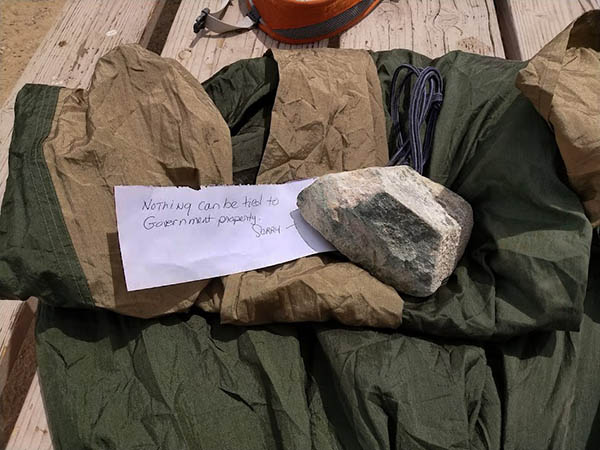 I enjoy the unique experience of hammock camping and whenever conditions are right have continued to camp in my hammock. I am now in the habit of setting up both my tent and hammock at my campsites and go with how I feel, the weather, and my surroundings. Hammock camping is another option to have, and with moto camping having more options is never a bad thing.
I enjoy the unique experience of hammock camping and whenever conditions are right have continued to camp in my hammock. I am now in the habit of setting up both my tent and hammock at my campsites and go with how I feel, the weather, and my surroundings. Hammock camping is another option to have, and with moto camping having more options is never a bad thing. And there you have it. No doubt there are more highly-charged comments posted by the time you read this. I stopped reading them and posting responses because I thought I might offend someone, or maybe even be offended myself. But then, I always have had a short fuse…
And there you have it. No doubt there are more highly-charged comments posted by the time you read this. I stopped reading them and posting responses because I thought I might offend someone, or maybe even be offended myself. But then, I always have had a short fuse…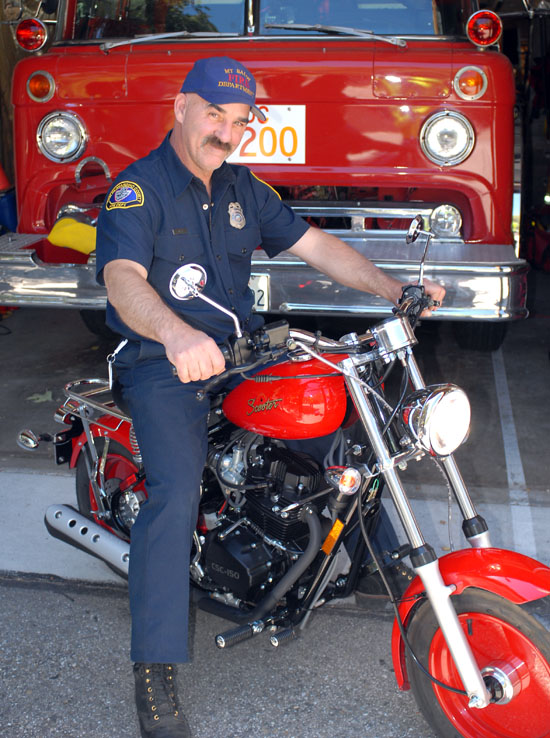
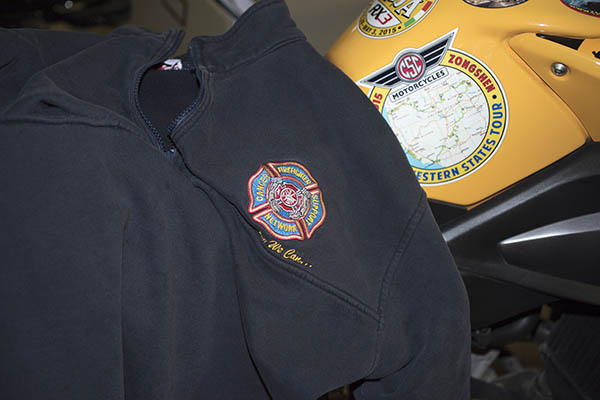






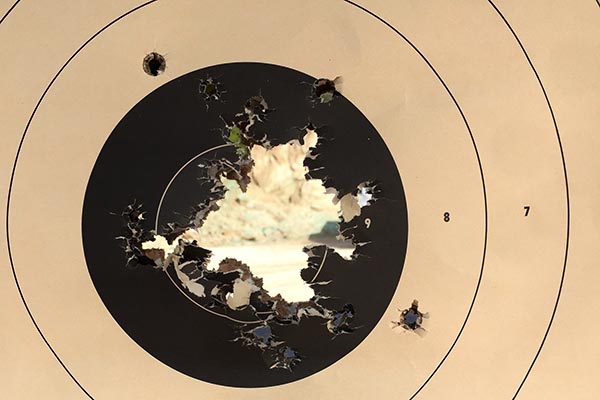
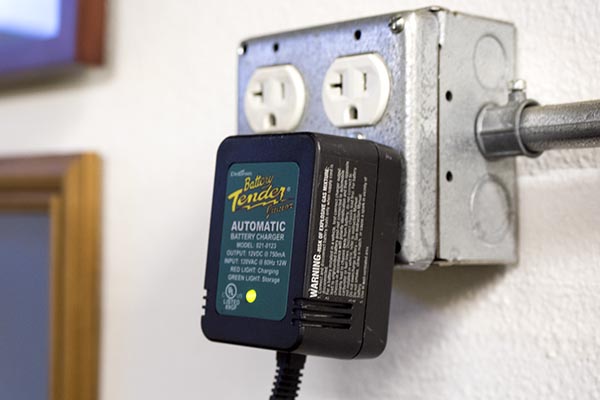

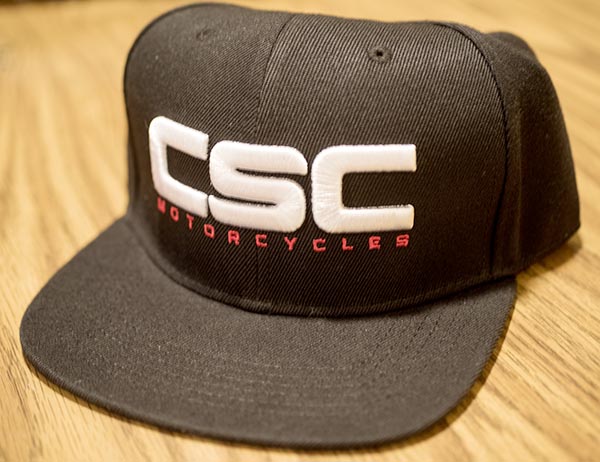


 I log into several online groups as a way of avoiding doing something constructive. One of the groups features photos of New Mexico. Some of the photos are spectacular, some are way over-processed. One guy started labeling his photos as “No Filter New Mexico.” This means the photo has not been doctored beyond the camera’s initial setting. A long-winded argument ensued pitting photographers (the guys who watermark their embarrassing, Willie-Wonka-colored Martin-landscape shots in an attempt to retain rights) and snap-shooters.
I log into several online groups as a way of avoiding doing something constructive. One of the groups features photos of New Mexico. Some of the photos are spectacular, some are way over-processed. One guy started labeling his photos as “No Filter New Mexico.” This means the photo has not been doctored beyond the camera’s initial setting. A long-winded argument ensued pitting photographers (the guys who watermark their embarrassing, Willie-Wonka-colored Martin-landscape shots in an attempt to retain rights) and snap-shooters. If I shoot a scene and then push the photo edit sliders to their limits did I create art or am I just working within an algorithm provided by the software manufacturer? Is the coder who designed the software the real artist? If I successfully dial a number on my cell phone is that art? No way! Now say I invite 500 people to a theater and I go on stage and successfully dial a phone number on that exact same phone. Is that art?
If I shoot a scene and then push the photo edit sliders to their limits did I create art or am I just working within an algorithm provided by the software manufacturer? Is the coder who designed the software the real artist? If I successfully dial a number on my cell phone is that art? No way! Now say I invite 500 people to a theater and I go on stage and successfully dial a phone number on that exact same phone. Is that art? Maybe art is made when its creator declares it as art. Even bad art like those over-processed photos are art if Slider-Man says so. The watermark guys proclaim their saturated images as art, who am I to deny them their petition?
Maybe art is made when its creator declares it as art. Even bad art like those over-processed photos are art if Slider-Man says so. The watermark guys proclaim their saturated images as art, who am I to deny them their petition?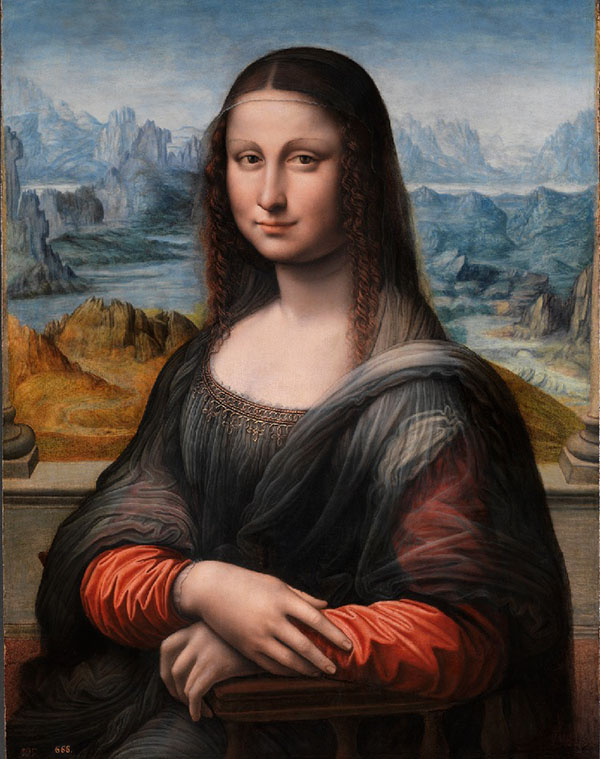 In the days of film, and before that when oil painting was the best way to record a scene, a modest-to-hard level of difficulty was involved. Cameras have become so good that nearly anyone can take a technically decent photo. Selecting the best angle and framing the photo are artistic things but they pale in comparison to carving a block of marble or tossing feces onto a canvas.
In the days of film, and before that when oil painting was the best way to record a scene, a modest-to-hard level of difficulty was involved. Cameras have become so good that nearly anyone can take a technically decent photo. Selecting the best angle and framing the photo are artistic things but they pale in comparison to carving a block of marble or tossing feces onto a canvas.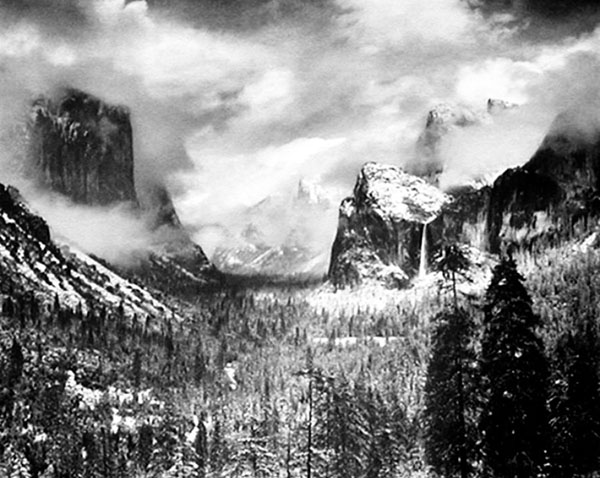

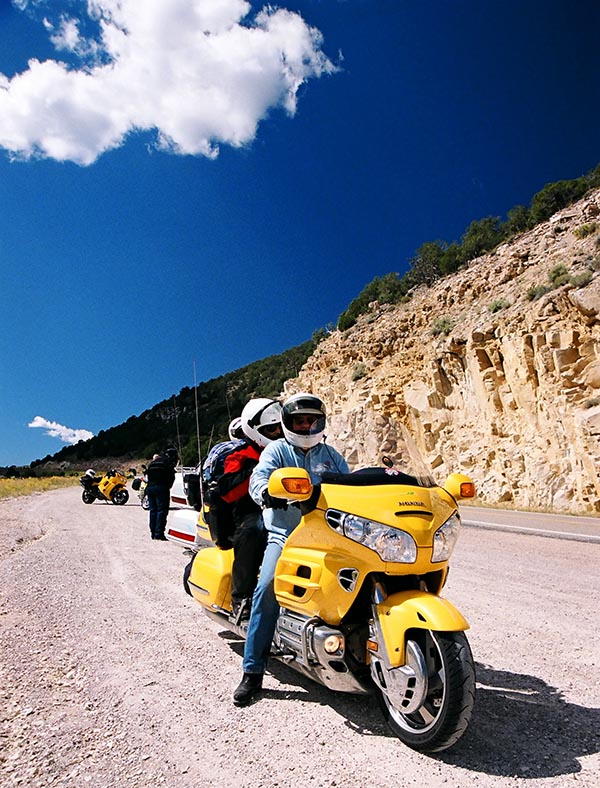
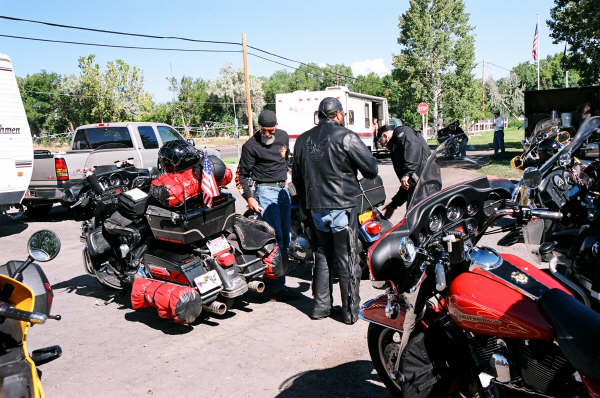


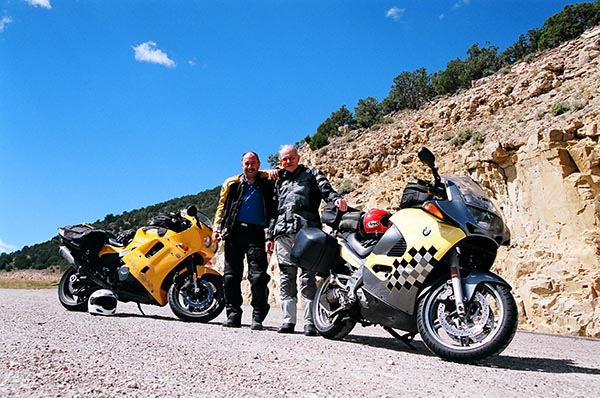
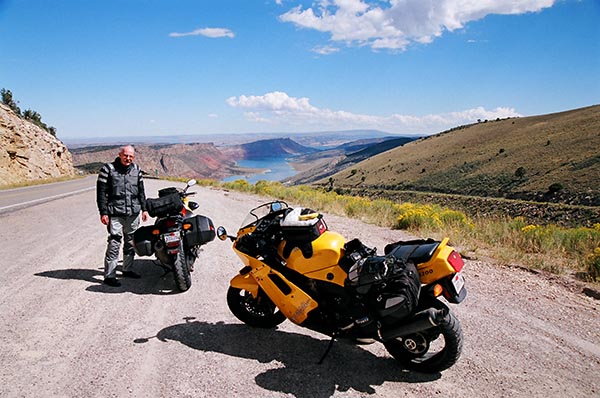
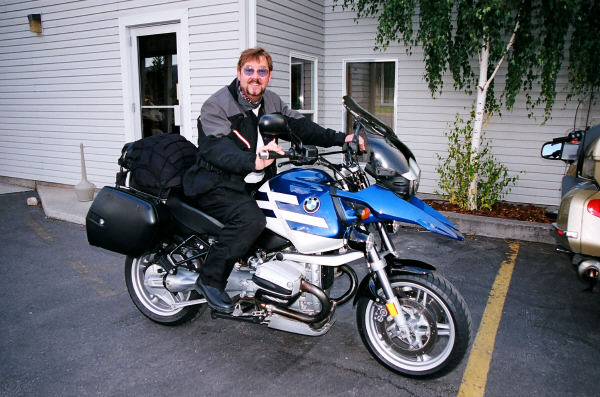
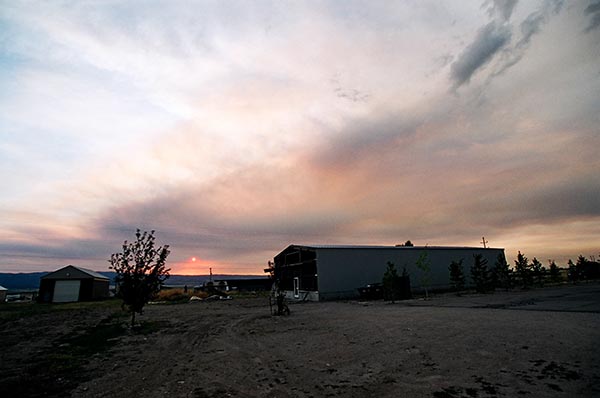
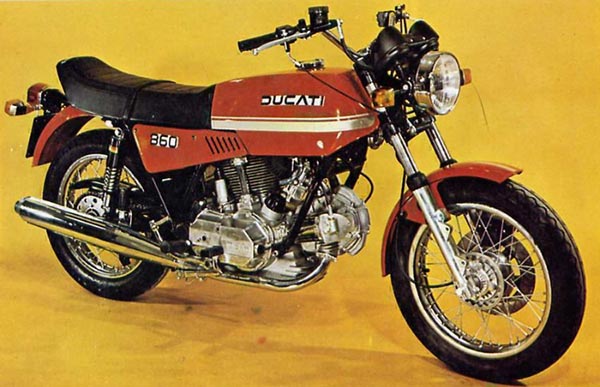 There are only a couple Ducatis that make my Dream Bike fantasy garage and the numero uno, top dog, ultimate Ducati is the springer 860. Unlike most Ducatis, this square-case, 90-degree, V-twin motorcycle eliminates the positive-closing desmodromic valve actuation system and in its place uses a conventional spring-return valve train. To some posers this change negates the whole reason for owning a Ducati. Not in my view: The ability to set valve lash with only a potato peeler on a motorcycle axle deep in cow manure plus the fact that I rarely run any motorcycle at valve floating RPMs means Desmo Ducks hold no advantage for me.
There are only a couple Ducatis that make my Dream Bike fantasy garage and the numero uno, top dog, ultimate Ducati is the springer 860. Unlike most Ducatis, this square-case, 90-degree, V-twin motorcycle eliminates the positive-closing desmodromic valve actuation system and in its place uses a conventional spring-return valve train. To some posers this change negates the whole reason for owning a Ducati. Not in my view: The ability to set valve lash with only a potato peeler on a motorcycle axle deep in cow manure plus the fact that I rarely run any motorcycle at valve floating RPMs means Desmo Ducks hold no advantage for me. Is it wrong to love a motorcycle solely for its looks? Giorgetto Giugiaro’s Jetson-cartoon styling speaks of optimism and a bold stepping-forth into the future. It looks fabulous and slabby and never ages in my eyes. This is one of those motorcycles you can stare at for hours. Why stop there? I’ve never ridden an 860GT so I’m just extrapolating from Ducati’s past performance but I’m sure the thing will handle street riding without issue.
Is it wrong to love a motorcycle solely for its looks? Giorgetto Giugiaro’s Jetson-cartoon styling speaks of optimism and a bold stepping-forth into the future. It looks fabulous and slabby and never ages in my eyes. This is one of those motorcycles you can stare at for hours. Why stop there? I’ve never ridden an 860GT so I’m just extrapolating from Ducati’s past performance but I’m sure the thing will handle street riding without issue. The bikes were available with electric start for the kicking-impaired and after 1975 Ducati exchanged the perfect angular styling for the more traditional, rounded Desmo GT look. It was an error that I may never forgive them for. The springer 860 stayed in production a few more years but Ducati decided to go all in with desmodromic to give their advertising department some thing to boast about.
The bikes were available with electric start for the kicking-impaired and after 1975 Ducati exchanged the perfect angular styling for the more traditional, rounded Desmo GT look. It was an error that I may never forgive them for. The springer 860 stayed in production a few more years but Ducati decided to go all in with desmodromic to give their advertising department some thing to boast about.